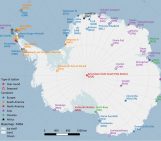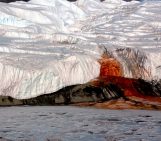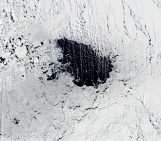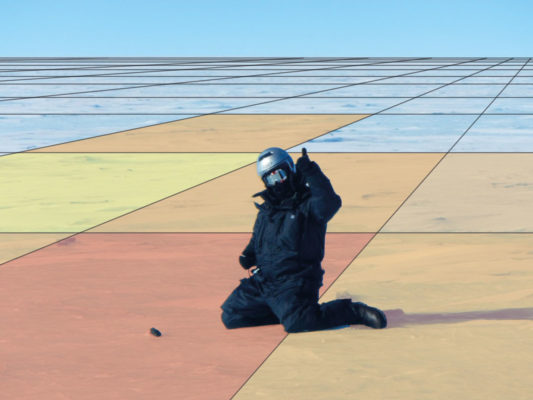
A Belgian-Dutch team of scientists created the first-ever “treasure map” that shows where in Antarctica meteorites are likely to be found. Meteorites are samples from space that fall as stone-like material on the surface of the Earth. Once recovered, meteorites provide crucial information on the formation and evolution of our Solar System.
First meteorite finds in Antarctica
December 1969, Yamato mountains, Antarctica – a Japanese field team collected nine meteorite-like rocks on the surface of Antarctica. Back in Japan the rocks were analyzed and turned out to be meteorites. The odds of finding nine meteorites anywhere on Earth in a timespan of 10 days are so low that the Japanese scientists realized that there must be something special going on here.
Concentrating mechanism
After the first meteorite discoveries on the Antarctic ice sheet, scientists began to investigate what mechanisms could explain such apparently improbable findings and a meteorite concentration mechanism was then proposed. The mechanism depends on the peculiar meteorological setting of Antarctica and on the flow of the ice that covers the entire continent. When meteorites fall on the Antarctic ice sheet, they are embedded in the ice sheet, after being covered by snow. Meteorites are then transported with the ice towards the margins of the ice sheet and finally end up in the ocean. This is what happens in most cases, but there are some exceptions: it is these that are of interest to us.
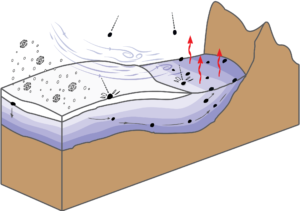
Figure 2. Illustration of the mechanism related to the ice flow (black arrows) and sublimation (red arrows) that concentrate meteorites in so-called blue ice areas in Antarctica. Meteorites are shown as black dots. [Credit: Veronica Tollenaar]
Since the first discoveries, thousands of meteorites have been found in Antarctica and every year, new campaigns are organized: their success is unparalleled: over 60% of all meteorites found on Earth stem from Antarctic missions. However, the full meteorite recovery potential of Antarctica remains largely untapped: to date, only a part of all Antarctic blue ice areas has been searched for meteorites, with varying degrees of success.
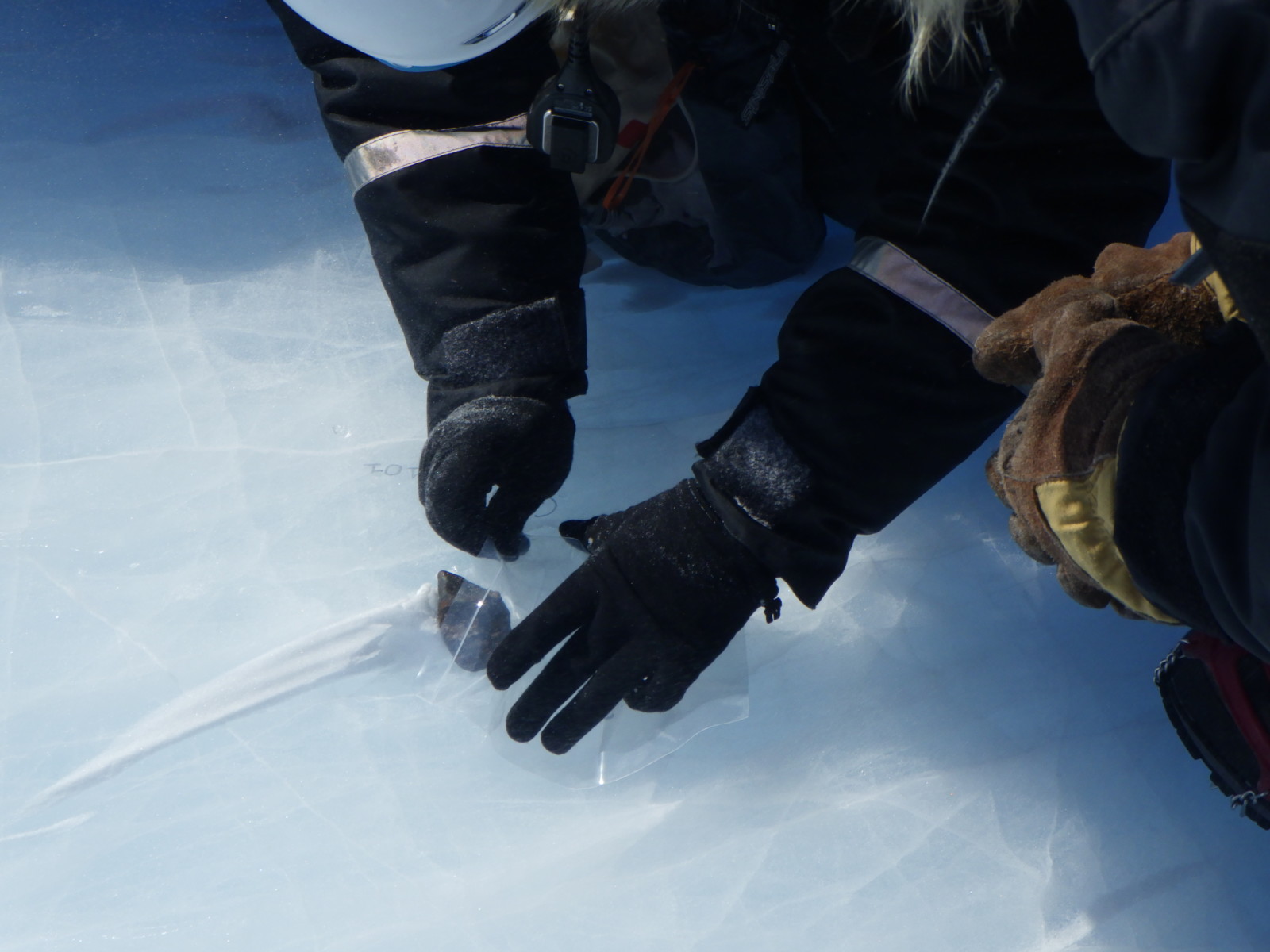
Figure 3. Meteorites are collected following strict protocols to avoid contamination before analysis in a laboratory. [Credit: field team of the JARE-54/BELARE 2012–2013 expedition to the Nansen blue ice field.]
Predicting where to search
To predict where to search for meteorites, we first need to understand the characteristics of the blue ice areas where meteorites have been found, and which factors result in the absence of meteorites in other blue ice areas. To this end, a lot of data is available: for most meteorites recovered from Antarctica, the retrieval location is documented in the meteoritical bulletin database. Moreover, there are numerous fieldwork reports on successful and unsuccessful meteorite missions.
Until now, deciding where to search was a task conducted by a very limited group of experts. This implies that there is an important human factor involved in meteorite recovery missions. Moreover, by relying solely on expert judgement, it is not possible to evaluate the potential of each area over a continent that is more than 460 times the size of Belgium (is Antarctica big or Belgium tiny?). To aid the planning of these typically expensive and logistically complicated missions, we created a map that highlights areas with a high potential to find meteorites meteorite over the entire continent. How did we do it? I am going to tell you!
Machine learning for Antarctic meteorites
To create a “treasure map” for Antarctic meteorites, we used machine learning. Through exhaustive analyses, we learned that we can predict meteorite-rich blue ice areas using observations on: (i) surface temperatures, (ii) ice flow velocities, (iii) surface cover types (through radar observations), and (iv) surface geometry (more specifically the surface slope). These four factors need to combine favorably to find meteorites. For example, if the ice flows too fast, meteorites will be transported away along with the ice, leaving no time to build up a meteorite concentration. Also, if the temperatures are very high on occasional days, the meteorites, because of their dark color, warm up more than ice, causing the underlying ice to melt, and the meteorite to sink back under the surface. Thus, the accumulation of meteorites on the surface is a matter of subtle balances between the different observations, that is well-captured by the machine learning algorithm.
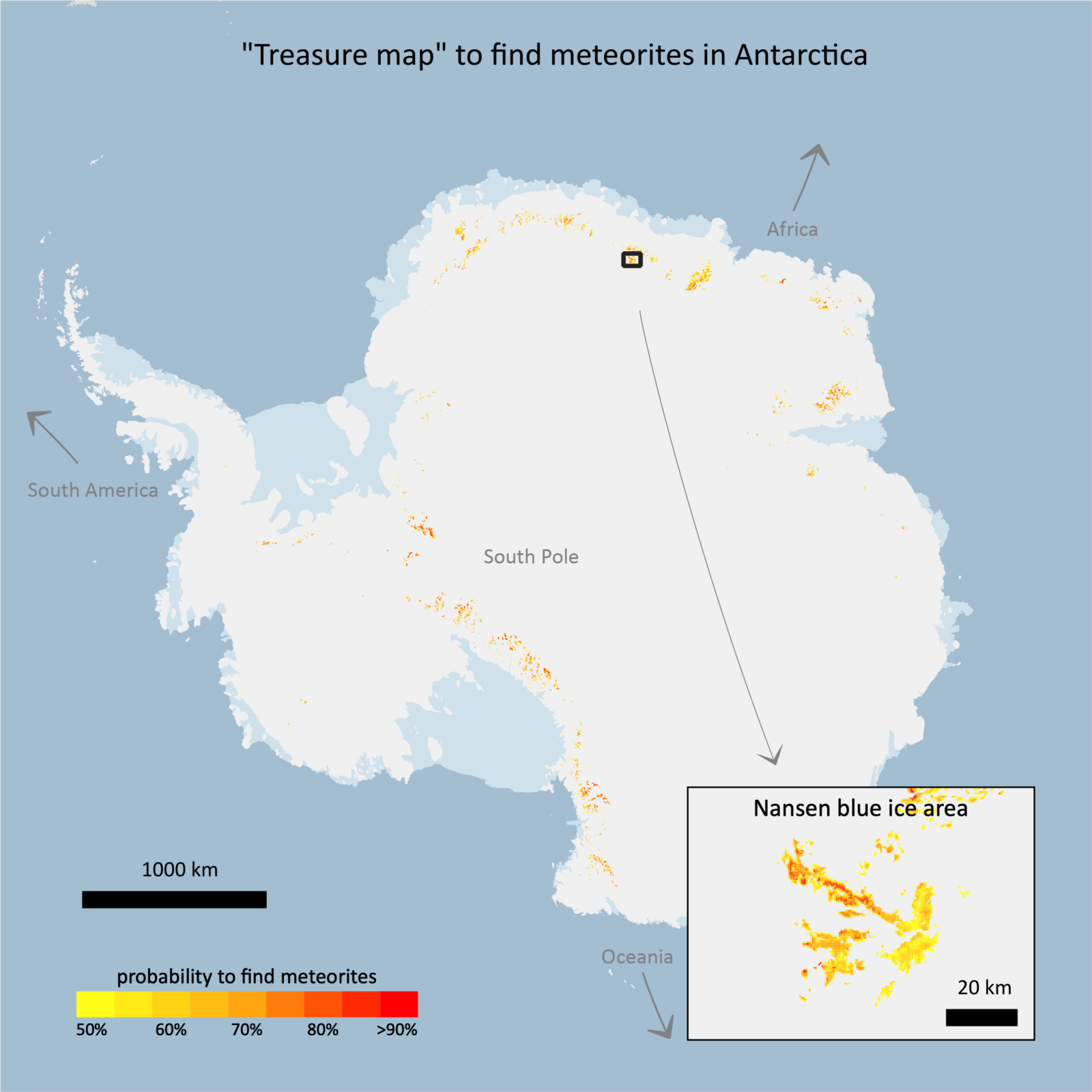
Figure 4. “Treasure map” to find meteorites in Antarctica, indicating the probability to find meteorites. [Credit: Veronica Tollenaar]
Some of the meteorite stranding zones that we predicted have already been visited, while others have, to the best of our knowledge, never been explored. For the latter, some areas are close to existing research stations, making a reconnaissance visit very attractive from a logistical (and financial) perspective. Moreover, while more than 45,000 meteorites have been collected to date in Antarctica, our calculations suggest that more than 300,000 meteorites are still present at the surface of the ice sheet. By visiting these locations and investigating the potential for using new recovery techniques in the field, such as surveys with drones, we are about to enter in a new era of Antarctic meteorite recovery missions. Exciting new stories are coming!
Further reading
- Tollenaar et al. (2022) “Unexplored Antarctic meteorite collection sites revealed through machine learning” Science Advances 8:4.
- Whillans & Cassidy (1983) “Catch a Falling Star: Meteorites and Old Ice” Science 222:4619
- Smedley (2019) Cryoblog post: “Image of the Week – The Lost Meteorites of Antarctica…“
- Nixon (2017) Cryoblog post: “Image of the Week – Searching for clues of extraterrestrial life on the Antarctic ice sheet“
Edited by David Docquier and Giovanni Baccolo
 Veronica Tollenaar is a FNRS-funded PhD student at the Université libre de Bruxelles. She investigates the role of Antarctic blue ice areas as climate archives and meteorite stranding zones. To this end, data-driven techniques are used in which a variety of remote sensing observations can be combined to obtain continent-wide analyses.
Veronica Tollenaar is a FNRS-funded PhD student at the Université libre de Bruxelles. She investigates the role of Antarctic blue ice areas as climate archives and meteorite stranding zones. To this end, data-driven techniques are used in which a variety of remote sensing observations can be combined to obtain continent-wide analyses.


